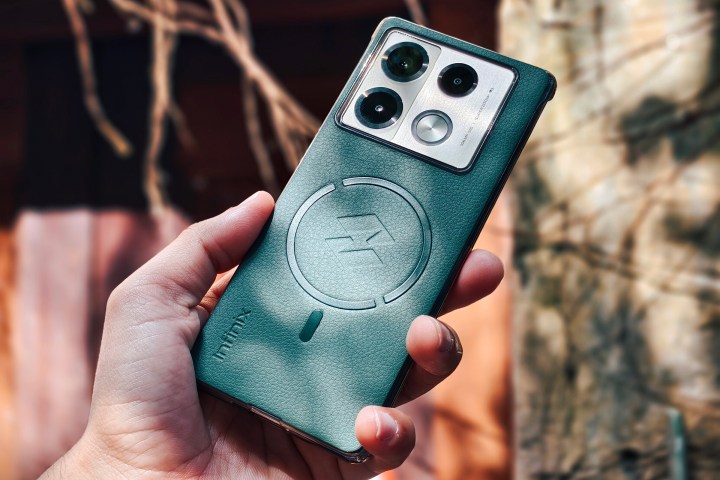
Infinix is an underdog phone brand that’s slowly gaining momentum in developing nations. It offers a variety of low-spec and midrange phones with premium designs and features at astoundingly low prices. That continues with the newest midrange series, the Infinix Note 40, which packs some unusual perks, most notably frictionless charging.
The series’ top-of-the-line Note 40 Pro+ is crammed with features you wouldn’t otherwise find on other sub-$300 phones. Among them is a 120Hz curved AMOLED display with an in-display fingerprint scanner, built-in AI features, dual speakers tuned by JBL, a super-slim profile with a vegan leather finish and gold accents, and wildly fast 100-watt wired charging.
But one feature that instantly sticks out as unusual is its support for wireless charging, which has previously been limited to more premium phones. Much more exciting is the technology baked into these phones that allows charging even in extreme temperatures and prevents overheating in almost every case.
Following the Infinix Note 40 series’ launch in March, I had a chance to put the brand’s charging claims to test in different scenarios. I also talked with Lake Hu, chief marketing officer, and Vento Lin, product director, for the Infinix Note series, and excerpts from the interview are sprinkled throughout the text of this article. Here’s why the Infinix Note 40’s approach to charging is unlike any other Android phone you may have heard of — and why that’s a good thing.
Let’s talk wired charging first

The Infinix Note 40 Pro+ supports wired charging at up to 100W via a charger included in the box. The high charging rate is certainly appealing for a $300 phone, but not unique. It is especially not a significant feat for Infinix, which has already achieved insanely fast wired charging speeds — 260W, to be exact — on a prototype, as well as 180W on a commercially available phone.
But despite its slower speeds than preexisting siblings, the new Note 40 Pro+ approaches charging differently. It fundamentally gives you ultimate control over charging by letting you choose from one of the three charging modes — Hyper, Smart, and Low Temp — when you plug in the 100W charger.
The Hyper mode harnesses the full potential of the 100W charging, which can, according to Infinix, charge 50% of the 4,600mAh battery on the Note 40 Pro+ in less than 10 minutes. For a full charge, the Hyper mode takes roughly 35 minutes. This kind of incredibly fast charging is desirable, especially when you realize just minutes before you have to head out that the phone is running on low battery. With just a few minutes of charging, you can achieve several hours’ worth of charge.

But superfast charging and frequent charging cycles can also stress any battery and result in faster degradation — which is also why Infinix consciously chose a slower charging speed on the Note 40 Pro+. On top of that, enormous heat is generated inside the phone if you use the phone while charging it, especially at high charging rates in the range of 100W. Heating, in addition to the preexisting stress of fast charging, can lead to quicker battery wear.
To reduce the impact that fast charging has on the battery’s health, Infinix adds a “Smart” mode, which manipulates charging speeds intelligently to maintain a uniform flow of charge into the battery at a nearly steady voltage. This reduces the impact on the battery life with some manageable decreases in the charging speeds.

The third mode, Low Temp, ensures the phone’s temperature does not increase while charging. This not only ensures a longer battery life when you’re not in a rush, but also averts accidents such as batteries igniting. Based on your charging habits, you can set the Smart or Low Temp mode as the default from the phone’s settings.
For other intensive scenarios like gaming, the phone also has a passthrough mode. It simply keeps the phone awake and pauses charging after a certain percentage to prevent heating and any deterioration in performance.
A special chip to lower temperatures
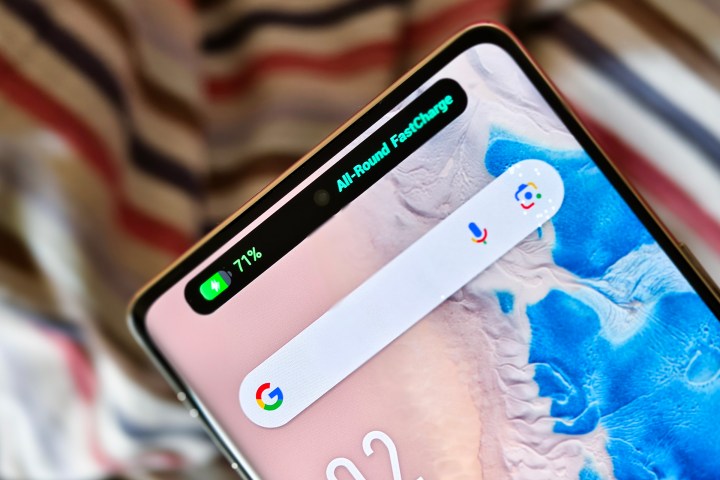
The charging speeds on the Note 40 Pro+ are managed by a special “Cheetah X1” chipset. This chip is separate from the MediaTek Dimensity 7020 chipset that drives the Note 40 Pro+ and is developed in-house by Infinix to optimize charging speeds and keep temperatures from rising.
The X1 chip has two main modules. The first one ensures the most optimal charging speeds are delivered for different wired or wireless charging scenarios while temperatures are kept under control. The second one ensures that charging is done safely. These measures apply both when using the charger included in the box and using third-party chargers.
When using a third-party GaN charger instead of the one bundled with the phone, the charging speed is limited to 40W. While this is considerably slower than the 100W charging you get with the stock charger, it still seems reasonable compared to other phone brands that offer breakneck charging speeds, but limit support for open standards like USB-PD to 15W to 18W. The biggest disadvantage of using a non-Infinix charger is that you don’t get the option to choose between the Smart and Low Temp modes.
Wireless charging across the board
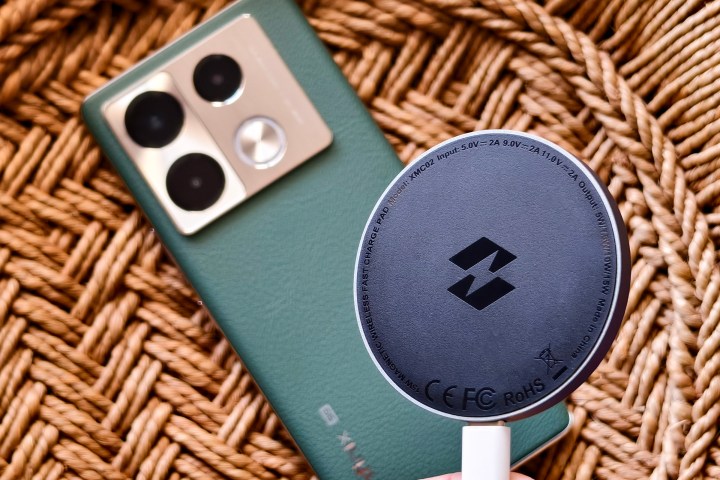
Infinix has already championed fast wireless charging with other phones. Last year, it demonstrated a proof of concept with 110W fast wireless charging and later introduced 50W wireless charging on a phone that you can buy. It even has a prototype for a phone that charges wirelessly without any physical contact. So, slower 20W wireless charging on the Note 40 Pro+ doesn’t initially sound very impressive. That is, until you learn that all four phones in the Note 40 series — priced between $200 and $300 — get wireless charging as standard.
While slower charging has its obvious disadvantages, its benefits lie in convenience. The ultrafast wireless charging technology works on a very specific protocol and specific chargers. These charges are not particularly portable; they are rather bulky because they require a larger surface area and a built-in cooling mechanism — like a fan — to keep the contact surface from getting too hot.
In comparison, Infinix’s Note 40 phones charge wirelessly off a slender and sleek puck. You can casually throw it in your pocket or backpack without worrying about the weight it will add. The company has chosen a magnetically attaching mechanism for the puck that’s identical to Apple’s MagSafe, and the accessory’s official name, “MagPad,” further cements its inspiration from Apple.
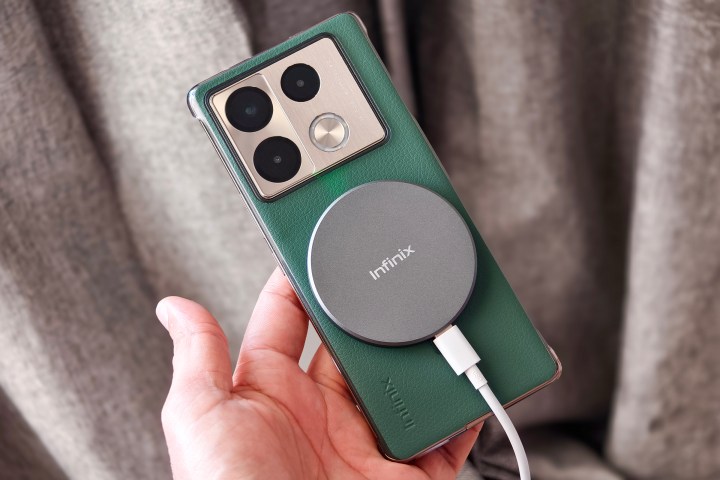
The puck’s charging speed is limited to 15W — even though the Note 40 Pro+ and the other phones in the series have wireless charging at 20W, a mismatch that Infinix should have worked out. It is, however, a relief to learn that the puck is included within the box, at least on the most expensive model in the series, although the actual availability might vary with region.
The phone’s magnetic pull is not strong enough to keep the puck fixed permanently, but Infinix includes a thin case with the phone to solve that. The case has a circular ring on the back, similar to MagSafe cases for the iPhone.
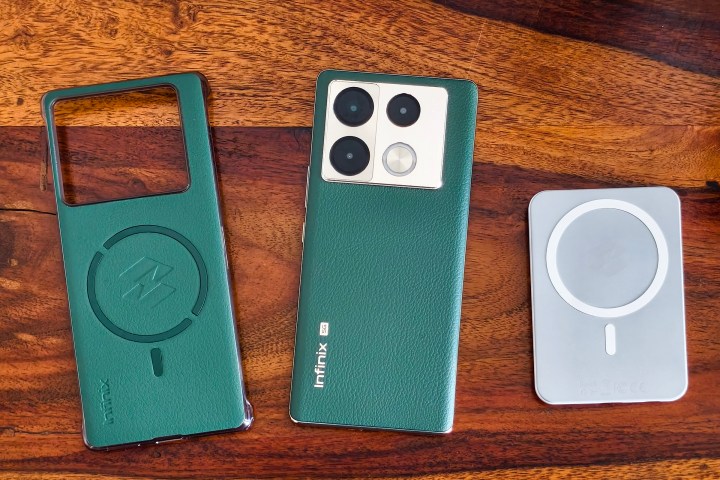
Besides improving the magnetic attraction between the phone and wireless chargers, the ring also allows the phone to be used with almost any Apple MagSafe-compatible accessory, such as , as shown in the image below.
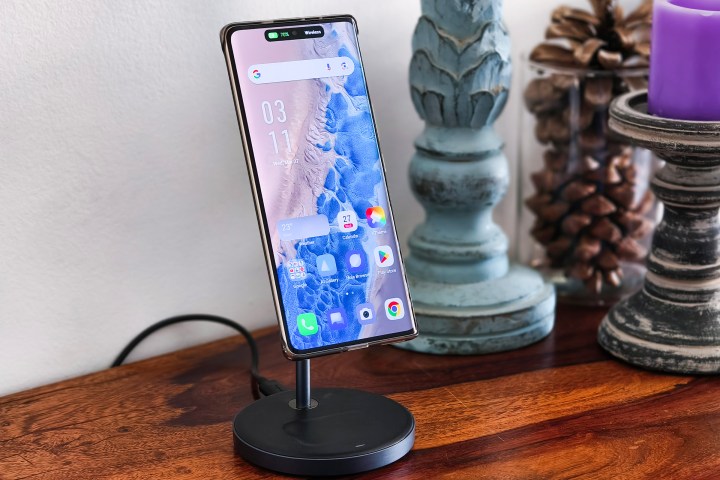
In addition to the charging pad included with the Note 40 Pro+, Infinix has also announced a 3,000mAh power bank with wired and wireless charging capabilities. The thin and light power bank attaches seamlessly to the phone without adding bulk or obstructing usability.
The Infinix Note 40 Pro+ weighs 212 grams (7.48 ounces) with the included case, while the power bank adds another 85 grams (3 ounces). Besides some occasional heating at the base of the power bank, it does not impact the phone’s ergonomics or make it inconvenient to use.
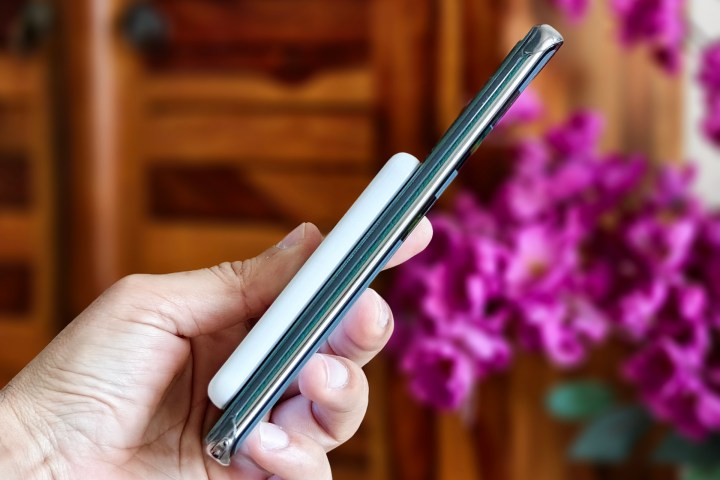
It is definitely a useful accessory if you have plans to stay outdoors or away from power sockets for prolonged periods. Notably, the power bank is sold separately, but Infinix hasn’t revealed its exact price. Besides Infinix’s phones, it can also charge any other phone or accessory with Qi charging support (smartwatches excluded).
Lastly, the Infinix Note 40 series also supports wireless charging at up to 5W, which means you can use the phone to charge accessories such as wireless earbuds. In theory, these features really improve the usability of the Note 40 Pro+ (and other phones in the series). For the actual performance, I assessed these claims for different charging scenarios.
What about real-world testing?
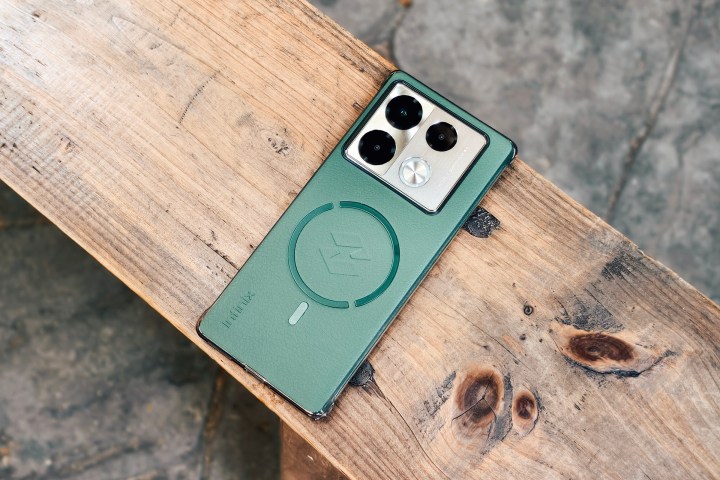
To evaluate the Note 40 Pro+’s charging prowess, I ran a series of tests and found actual performance befitting Infinix’s claims. When charging in the wired Hyper mode, the phone’s battery went from 5% to 45% in the first 10 minutes and charged completely in less than 35 minutes. In the Smart mode, the charging speed was slower at 55 minutes for the phone to charge fully. When using a third-party charger with USB-PD, the charging duration increases to slightly over an hour.
However, it was not the charging speeds that I was curious about, but rather, how well the phone controls heat generated during these sessions. At an ambient temperature of roughly 27 degrees Celsius (80 degrees Fahrenheit), the temperature of the phone’s back rose to a maximum of 38 degrees Celsius (100 degrees Fahrenheit) when charging at full throttle and just 31 degrees Celsius (88 degrees Fahrenheit) when charging in the Smart mode. I recorded these temperatures using a USB-C thermal camera accessory for Android phones that I reviewed a few months ago.
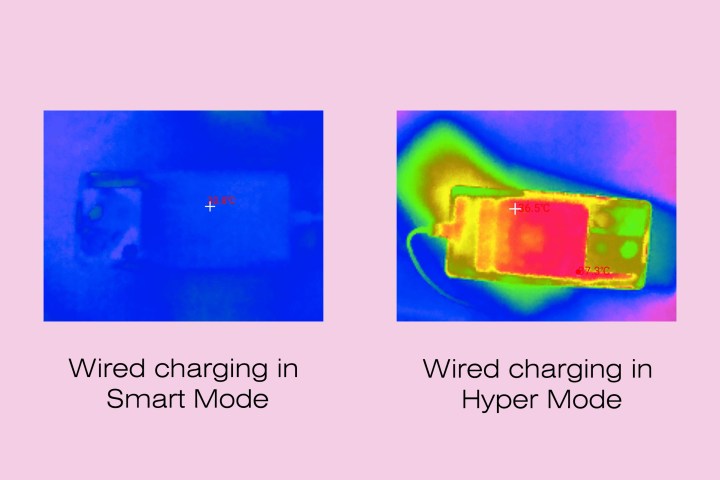
When power was supplied wirelessly to the Infinix Note 40 Pro+, the charging rate was much slower. Using the 15W MagCharge puck that was included, the phone took over two hours to charge fully. The phone takes much longer to charge using the slim MagCharge power bank (sold separately) due to its output being limited to 7.5W.
Again, the slow charging speed is not what I was concerned about; it was the heat generated as a byproduct of electric induction, which is the phenomenon used for wireless charging. I was amazed to observe that the temperatures remained well under the values that the phone touched when charging using the wired connection. Only the bottom part of the power bank breached 40 degrees Celsius (104 degrees Fahrenheit), which made the phone slightly uncomfortable to operate with the power bank attached.

At no stage did the phone itself feel uncomfortably hot to hold — while using either the puck or the power bank. It was fairly convenient to use while charging with the magnetic puck. The same also applies to times when the phone was used to charge a pair of earbuds using the reverse wireless charge feature.
Overall, the Note 40 Pro+ backed up the brand’s claims about ease and flexibility in all conditions and scenarios.
Infinix aids Apple’s wireless charging vision
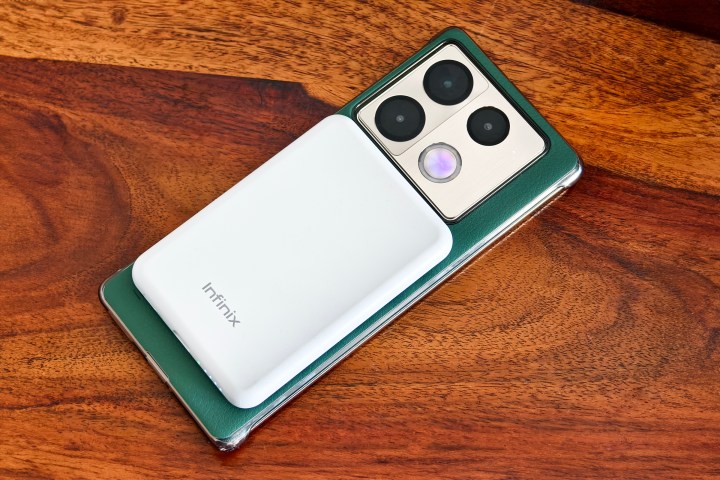
While launching its first iPhones with wireless charging — the iPhone 8 and iPhone X — Apple projected a future where every flat surface, from kitchen counters to tables in restaurants and airports, would serve as wireless chargers. Although this vision didn’t materialize into reality, Apple recalibrated efforts toward a more personal and convenient form of wireless charging with MagSafe. With this, Apple successfully achieved something that Android phone brands that had offered wireless charging on phones long before Apple couldn’t: it built an entire ecosystem of accessories for the iPhone where it didn’t have to rely on other brands.
This initiated a movement where accessory makers proactively made accessories, especially MagSafe-compatible cases, for Android phones. But wireless charging itself has remained limited to expensive phones — which cost at least $500.
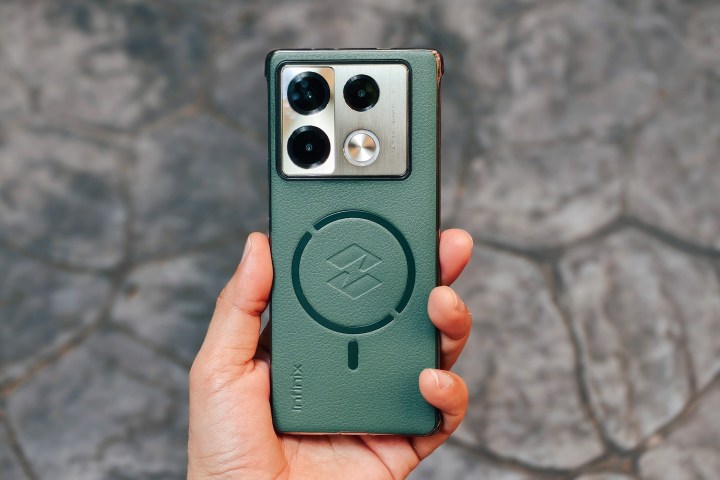
Infinix’s initiative to add wireless charging to sub-$300 phones reignites hopes for the feature’s success — just as Apple imagined. Even though the inspiration Infinix draws from Apple is evident, the implementation on affordable phones is beneficial for the mobile phone industry in general, especially in the developing nations where Infinix primarily sells. It’s apparent that Infinix does not compete with Apple — it contributes to realizing the latter’s vision where wireless charging is ubiquitous and easily accessible.
For wireless charging to succeed, more brands must follow suit and add it to midrange phones. Motorola’s decision to do that with the 2024 Moto G Power 5G is a welcome addition, even though it falls behind Infinix’s implementation of a cheaper MagSafe-like ecosystem.
Editors' Recommendations
- A surprise phone just beat the Galaxy S24 Ultra in a big way
- Motorola’s new Android phone looks amazing, but there’s a catch
- Your iPhone just got a new iOS update, and you should download it right now
- I thought I’d hate this cheap Android phone. It proved me wrong
- Qualcomm is about to make cheap Android phones better than ever




